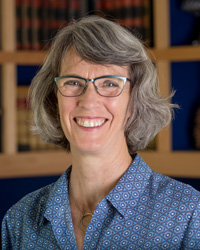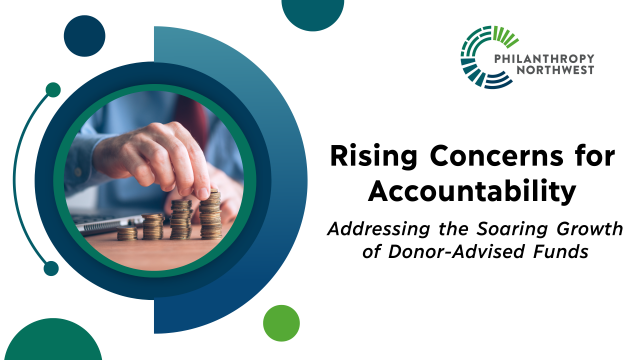Kimberlee Maphis Early, Center for Disaster Philanthropy
Community foundations in the Philanthropic Preparedness, Resiliency and Emergency Partnership (PPREP) cohort recently participated in a webinar, "Lending as a Tool in Disaster Recovery," hosted by the Center for Disaster Philanthropy (CDP) and The Funders’ Network for Smart Growth and Livable Communities.
Bob Ottenhoff, CDP president, moderated the session, with special guest Rosalie Sheehy Cates, Philanthropy Northwest's Impact Investing Catalyst Fellow and consultant with The Giving Practice.

In her presentation, “Nuts & Bolts to Consider in Disaster Mission Investing,” Cates outlined tips for determining the need or appetite for a lending program, evaluating internal foundation capacity for launching and servicing loans, exercising due diligence in determining credit-worthiness of applicants, identifying potential partners (particularly if the internal capacity for lending is not sufficient) and understanding the legal and missional aspects of a lending program.
Brian Fogle, president and CEO of Community Foundation of the Ozarks and a former banker, shared stories of successful lending programs dating back to the Marshall Plan after World War II, and culminating with his experience as a banker participating to secure a $400,000 community development block grant for a lending program in Stockton, Missouri following a series of tornadoes that destroyed the downtown area.
Both Cates and Fogle suggested lending as one way to make investments that reflect a foundation’s mission, in particular by supporting nonprofit or business losses not covered by insurance or federal support. Such lending programs would not supplant or would not be necessary where favorable terms for disaster recovery loans from traditional financial institutions are available — but might fill a role in the financial recovery by incorporating conditions into the lending agreements such as lower interest rates or more flexible repayment terms.
Both speakers highlighted advantages of a lending program, including:
- Ability to extend the loan timeline through a long-term recovery period
- Focus on identified gaps in funding after insurance and FEMA settlements have been disbursed
- Opportunity to “build back better” by envisioning enhancements and revitalization as opposed to mere replacement
- Provision of an ongoing source of investment capital for future applicants
They offered several cautions, as well, including:
- Necessity of “doing homework” to make sure there is a demand for lending
- Establishment of clear terms and process in advance of a disaster event
- Identification of issues in review of the applicant, such as what Fogle referred to as “Lending 101’s Three C’s”— character (past credit history, reputation in community, sound leadership), collateral (ways in which institution can secure the loan), and cash flow (income and expense stream demonstrating ability to make loan payments). Fogle suggested that a foundation might relax one of the three elements, but not two, and lenders should never relax the character requirement, as “a credit risk prior to a disaster is probably going to be a credit risk after a disaster.”
- Cates noted that “good underwriting makes better loans!” Say no to unqualified applicants upfront, rather than risk their humiliation in not complying with terms of the loan and the loss of institutional dollars and board support for lending. If a worthy organization cannot make repayment but needs support, make a grant, not a loan.
- Avoidance of micro-lending where the work to service multiple loans of small amounts is not advisable for community foundations, but can be outsourced to experienced organizations specializing in microloans.
- Recruitment of intermediaries (e.g., banks, community development financial institutions, accountants) who can assist with paperwork, reporting and servicing of loans if foundation chooses not to provide those functions, thereby giving these persons and institutions a role to play in recovery.
- Size matters! Do not make a loan in an amount that is any larger than what you might provide in a grant.
Philanthropy Northwest is working with the Center for Disaster Philanthropy to create and curate content for our network.
For more information on the Catalyst Fellows, contact Anne Yoon at ayoon@philanthropynw.org.


